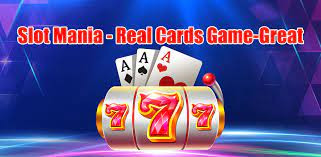Slot machines, often called “one-armed bandits,” have 24jamslot been a mainstay in casinos for over a century. These simple yet captivating games of chance offer entertainment, excitement, and the prospect of substantial payouts. This article explores the history, mechanics, and evolution of slot machines into the digital age, highlighting why they remain one of the most popular forms of gambling worldwide.
A Brief History of Slot Machines
The story of slot machines begins in the late 19th century. In 1891, the first coin-operated gambling machine was invented by Sittman and Pitt in Brooklyn, New York. This machine had five drums and used a deck of 50 playing cards. Players inserted a coin and pulled a lever to spin the drums, aiming for poker hands. However, there was no direct payout mechanism, and winning combinations often resulted in prizes determined by the establishment hosting the machine, such as free drinks or cigars.
In 1895, Charles Fey, a mechanic from San Francisco, revolutionized the industry by creating the Liberty Bell, the first true slot machine. Featuring three reels and five symbols — diamonds, hearts, spades, horseshoes, and a cracked Liberty Bell — Fey’s design introduced automatic payouts. A matching row of Liberty Bells yielded the highest prize of 50 cents. This simple yet effective design laid the foundation for modern slot machines.
The Mechanics of Classic Slot Machines
Traditional slot machines operate on a basic principle: spinning reels with symbols that align to form winning combinations. Originally, these machines used physical reels powered by springs and gears. A lever, which earned slot machines their “one-armed bandit” nickname, set the reels in motion. The outcome was determined by mechanical stops on each reel.
Key components of a classic slot machine include:
- Reels: Cylinders with various symbols that spin when the game is activated.
- Paylines: Horizontal, diagonal, or zigzag lines where matching symbols must land to win.
- Payout Table: A guide showing the winning combinations and their corresponding payouts.
Mechanical slots dominated until the 1960s, when electromechanical machines began to emerge, incorporating electrical components for added complexity and higher reliability.
The Digital Revolution
The 1970s and 1980s witnessed the rise of video slot machines, which used computer screens instead of physical reels. The shift to digital technology allowed for more sophisticated gameplay, including advanced graphics, bonus features, and multiple paylines. In 1976, the first true video slot was developed by Fortune Coin Co., using a modified Sony television screen as its display.
With the advent of the internet, online slots became a new frontier. The late 1990s and early 2000s saw the launch of the first online casinos, offering digital versions of traditional slot machines. Today, online slots are a multi-billion-dollar industry, featuring thousands of themes, innovative features, and substantial jackpots.
Features and Innovations
Modern slots offer a wide range of engaging features that enhance gameplay:
- Wild Symbols: Substitutes for other symbols to form winning combinations.
- Scatter Symbols: Unlock special features like free spins or bonus rounds.
- Progressive Jackpots: Prize pools that grow with each bet placed, offering life-changing payouts.
- Bonus Games: Interactive mini-games that break up regular play and offer additional rewards.
Themed slots have also gained immense popularity, drawing inspiration from movies, TV shows, music, and popular culture.
The Psychology Behind Slot Machines
Slot machines are designed to be both entertaining and addictive. They use a combination of bright lights, engaging sounds, and near-miss outcomes to keep players spinning. The “random reinforcement” principle — where wins occur unpredictably — creates a sense of anticipation and excitement that fuels continued play.
Responsible Gambling
While slots are a fun and exciting form of entertainment, it’s important to approach them responsibly. Setting limits, understanding the odds, and knowing when to walk away are crucial strategies for enjoying slot machines without falling into problematic gambling habits.
Conclusion
Slot machines have come a long way from their mechanical beginnings to the digital marvels found in modern casinos and online platforms. Their simplicity, combined with the allure of chance and the potential for big wins, ensures they remain a beloved staple of gambling culture. As technology continues to evolve, the future of slots promises even more innovation, creating new ways for players to experience the thrill of the spin.

